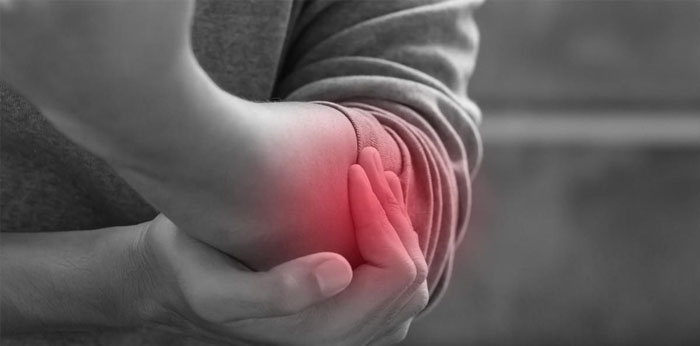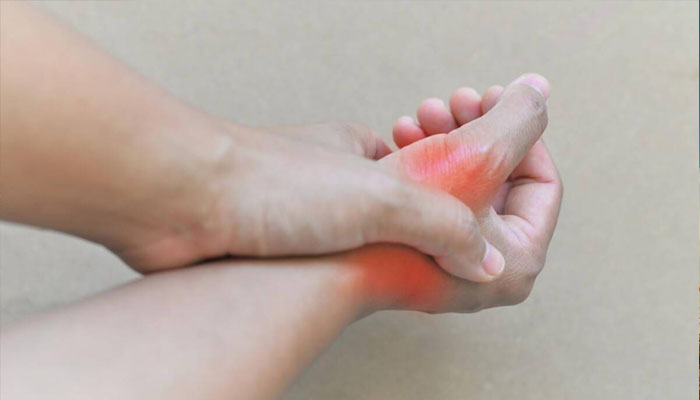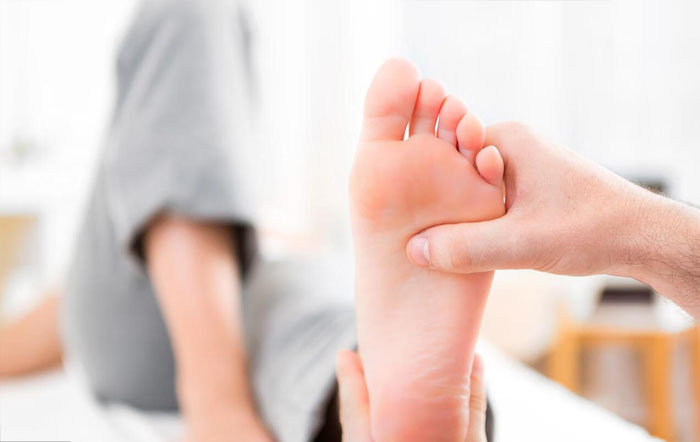- Login
- Cart{{shopingCartNum}}
- English
With the change of modern lifestyle, gout has quietly entered ordinary households, becoming an important issue affecting people's health.

Gout is a disease caused by abnormal metabolism of uric acid in the body. Uric acid, this seemingly inconspicuous chemical substance, forms sharp urate crystals and deposits in joints or surrounding tissues, causing intense inflammatory reactions and unbearable pain when its concentration in the blood is too high. The initial attack is often characterized by redness, swelling, heat, and pain in the big toe joint, and may subsequently involve other joints such as the ankle, knee, or wrist.
Globally, the prevalence of gout ranges from 0.1% to 10%, while the prevalence in China is about 5.75%, and it is on the rise. Gout is more common in men over 30, especially in those with a family history of obesity.

Protective effect of estrogen: Estrogen in women during reproductive age helps promote uric acid excretion, thus lowering uric acid levels. After menopause, the incidence of gout gradually approaches that of men.
Male hormones: Male hormones (such as testosterone) are associated with higher uric acid levels, increasing the risk of gout.
Uric acid production and excretion: Men usually have a higher uric acid production rate and a lower excretion rate, leading to higher uric acid levels in the blood and a greater tendency to form urate crystals, thus triggering gout.
Dietary habits: Men are more likely to consume high-purine foods (such as red meat, seafood) and alcohol, both of which can increase uric acid levels.
Lifestyle: Men are generally more likely than women to have unhealthy habits such as smoking, alcohol consumption, and lack of exercise, all of which are risk factors for gout.
Genetic factors: Gout has a certain hereditary component, and the risk of developing the disease is higher in men with a family history of gout.
Obesity and metabolic syndrome: The incidence of obesity and metabolic syndrome is higher in men, both of which are important risk factors for gout. Obesity increases uric acid production and reduces uric acid excretion.
These factors combined contribute to a significantly higher incidence of gout in men compared to women.

1. Sudden joint pain: Typically, it occurs suddenly at night, with severe pain that can reach its peak.
2. Redness and swelling: The affected joint is red, swollen, hot, and painful, with limited mobility.
3. Recurrent attacks: If not effectively controlled, gout can progress from occasional to frequent attacks.
4. Tophi: Prolonged hyperuricemia may lead to the deposition of urate crystals, commonly seen in the ears, joints, and other areas.
The core cause of gout is elevated uric acid levels in the body, known as hyperuricemia. Uric acid comes from two sources: purine metabolism in food and natural breakdown of cells in the body. When uric acid accumulates excessively in the blood, it forms urate crystal deposits in joints and soft tissues, leading to inflammation and pain.

1. Dietary management:
Reduce high-purine foods: Avoid or reduce intake of animal organs, red meat, seafood (such as shellfish, shrimp, crab), and meat broth, all of which are high-purine foods.
Limit alcohol: Especially beer and spirits, as they can increase uric acid production and decrease its excretion.
Drink more water: Consume at least 2000 milliliters of water daily to help excrete uric acid.
Eat more fruits and vegetables: Fruits and vegetables rich in vitamin C help lower blood uric acid levels.
Low-sugar diet: Avoid sugary drinks and high-fructose foods, as fructose can increase uric acid production.
2. Weight management: Maintain a healthy weight, as obesity increases uric acid levels and exacerbates the risk of gout.
3. Regular exercise: Moderate aerobic exercise, such as brisk walking, swimming, or cycling, while avoiding strenuous activities that may cause joint injury.
4. Quit smoking and limit alcohol: Smoking and excessive alcohol consumption both increase the risk of gout.
5. Regular check-ups: Regularly monitor uric acid levels, especially for those with a family history.

1. Acute attack treatment: Under the guidance of a doctor, use nonsteroidal anti-inflammatory drugs (NSAIDs), colchicine, or short-term steroids to control inflammation and pain. Rest and elevate the affected limb, and avoid bearing weight.
2. Long-term uric acid-lowering therapy: For patients with frequent attacks or existing tophi, long-term use of uric acid-lowering medications such as probenecid to promote uric acid excretion or allopurinol to inhibit uric acid production is necessary. Medication should be adjusted according to individual circumstances under the guidance of a doctor.
3. Lifestyle adjustments: Continue to follow the above preventive measures and develop healthy lifestyle habits.
4. Avoid triggers: Pay attention to avoiding cold, overexertion, and mental stress, all of which can be triggers for gout attacks.
By comprehensive use of the above preventive and management measures, gout can be effectively controlled, reducing the frequency of attacks and improving quality of life. Keep in mind that there are significant individual differences, so specific treatment plans should be developed by a professional doctor based on the patient's actual condition.